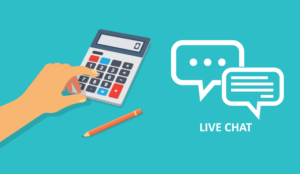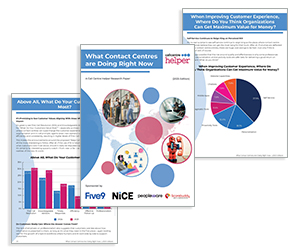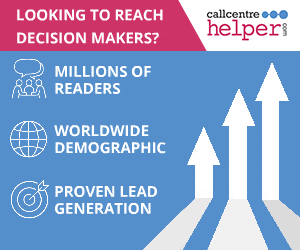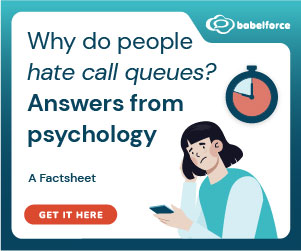In today’s fast-paced customer service landscape, live chat has become a key channel for delivering quick and effective support.
To make sure your team is operating at its best, it’s important to track and optimize key metrics that directly impact performance.
In this article, we explore 8 essential benchmarks that can help you fine-tune your live chat operations and improve overall performance.
8 Key Benchmarks for Optimizing Your Live Chat Performance
Here are 8 key benchmarks to help you optimize your live chat performance and drive better results.
1. First Response Time (FRT)
First impressions matter, and in live chat, they happen in seconds. First Response Time (FRT) measures how long it takes for an agent to reply to a customer’s initial message.
A fast FRT shows customers they are valued and that help is readily available. Long waits, even if only a few minutes, can frustrate users and push them towards competitors.
Best Practice:
- Aim for a first response within under 60 seconds. Anything longer risks losing the customer’s attention.
- Use automated greetings to acknowledge customers immediately and buy time for a personalized follow-up.
- Implement intelligent routing to ensure the right agent handles the chat from the start.
- Monitor staffing levels during peak times to prevent delays.
How to Calculate First Response Time:
Use this simple formula:
First Response Time = (Sum of all first response times) ÷ (Total number of chats)
2. First Contact Resolution (FCR)
Resolving issues the first time around is the gold standard of great customer service. First Contact Resolution (FCR) measures the percentage of customer enquiries resolved during the first interaction, without requiring follow-ups or escalations.
Best Practice:
- Aim for an FCR rate of 70–75% or higher. A lower rate might suggest that customers are being bounced around or that agents lack the tools or authority to solve issues.
- Train agents thoroughly so they can handle a broad range of issues without needing to escalate.
- Equip agents with real-time access to customer information, product data, and troubleshooting tools.
- Encourage ownership by giving agents the authority to make certain decisions on the spot.
- Track and analyse repeat contact reasons to identify and fix underlying problems.
How to Calculate First Contact Resolution:
To calculate First Contact Resolution, use the formula:
FCR (%) = (Number of issues resolved on first contact ÷ Total number of issues) × 100
3. Average Handle Time (AHT)
Average Handle Time (AHT) measures the total time an agent spends handling a customer interaction, including the time spent chatting, doing any follow-up work, or completing related tasks.
It is a critical metric for understanding agent efficiency and the overall productivity of your live chat operations.
While quick resolutions are important, a low AHT should not come at the expense of quality service. The goal is to resolve issues thoroughly without rushing the customer experience.
Best Practice:
Strive for an AHT that balances speed with quality. AHT benchmarks vary by industry, but generally, a handle time between 6 and 8 minutes for live chat is considered healthy.
To improve AHT, train agents to ask precise questions, guide conversations efficiently, and use pre-written templates or knowledge base articles when appropriate.
How to Calculate Average Handle Time:
To calculate Average Handle Time, use the formula:
AHT = (Total chat duration + Follow-up time) ÷ (Total number of chats)
4. Agent Utilization Rate
Agent Utilization Rate measures how much time agents spend actively engaged with customers compared to their total available working hours.
It’s an important metric for understanding workforce efficiency and ensuring that staffing levels align with chat volume demands.
A balanced utilization rate helps maintain agent productivity without leading to burnout. Overutilized agents may experience fatigue and reduced service quality, while underutilized agents indicate overstaffing and wasted resources.
Best Practice:
Aim for an agent utilization rate between 70% and 80%. This range typically allows agents to stay productive while still having enough time for breaks, training, and administrative tasks.
To improve utilization, forecast chat volumes accurately and schedule staff accordingly. Cross-train agents to handle multiple channels if needed, and automate low-complexity tasks to free up agent time for higher-value interactions.
How to Calculate Agent Utilization Rate:
To calculate Agent Utilization Rate, use the formula:
Agent Utilization Rate (%) = (Total time spent on chats ÷ Total available working time) × 100
5. Number of Live Chats
The Number of Live Chats metric tracks how many chat sessions your team handles over a given period. Monitoring this figure helps you assess customer demand, agent workload, and the overall effectiveness of your live chat channel as a support tool.
Tracking chat volume trends over time allows you to plan staffing, spot peak activity periods, and identify potential growth opportunities or service gaps.
Best Practice:
Keep a close watch on daily, weekly, and monthly chat volumes. Establish a baseline and adjust staffing levels to meet rising or falling demand without overwhelming your team or sacrificing service quality.
Use historical chat data to forecast future needs and create flexible staffing models that can scale up or down during high-traffic seasons or special campaigns.
How to Calculate Number of Live Chats:
Calculating the Number of Live Chats is straightforward:
Simply sum up the total number of completed chat sessions over a specific timeframe.
6. Customer Satisfaction (CSAT)
Customer Satisfaction (CSAT) measures how happy customers are with the support they received during their live chat experience. It is typically captured through a short survey immediately after a chat session, often asking customers to rate their satisfaction on a scale.
CSAT is one of the most direct indicators of how well your live chat team is meeting customer expectations and delivering positive experiences.
Best Practice:
Aim for a CSAT score of 85% or higher. Consistently high scores indicate that agents are not only resolving issues but also providing a pleasant, supportive experience.
To improve CSAT, focus on active listening, maintaining a friendly tone, resolving issues promptly, and personalizing interactions whenever possible. Regularly review customer feedback to spot trends and areas for agent coaching or process improvements.
How to Calculate Customer Satisfaction:
To calculate CSAT, use the formula:
CSAT (%) = (Number of satisfied responses ÷ Total number of survey responses) × 100
7. Net Promoter Score (NPS)
Net Promoter Score (NPS) measures customer loyalty by asking how likely customers are to recommend your company to others.
While CSAT focuses on immediate satisfaction, NPS looks at the broader relationship and overall sentiment toward your brand.
Best Practice:
Aim for an NPS of 50 or higher. A score above 50 is generally considered excellent, while scores above 70 are world-class.
To improve NPS, focus on delivering consistent, high-quality customer experiences beyond just solving immediate problems.
Train agents to create memorable interactions, show genuine empathy, and advocate for customer needs. Gathering and acting on feedback from detractors (unhappy customers) is equally important for improvement.
How to Calculate Net Promoter Score:
To calculate NPS, use the formula:
NPS = % of Promoters – % of Detractors
Promoters are customers who respond with a 9 or 10 on a scale of 0–10, while Detractors respond with a 0–6. Passives (those who respond with 7–8) are ignored in the calculation.
8. Quantity of Live Chats
Quantity of Live Chats measures the total number of chat interactions handled within a specific period. While similar to the Number of Live Chats metric, this benchmark focuses more on the overall workload, volume trends, and the growing role of live chat as a support channel.
Tracking the quantity of chats helps you understand customer engagement levels, predict staffing needs, and assess the effectiveness of your live chat strategy over time.
Best Practice:
Monitor chat volumes regularly to identify patterns such as daily peaks, seasonal spikes, or increased demand following marketing campaigns.
Use this data to fine-tune staffing models, optimize response times, and maintain service quality as chat volumes grow.
Investing in chatbots or AI-assisted tools can help manage high chat quantities without overwhelming your human agents, ensuring a smooth customer experience even during busy periods.
How to Calculate Quantity of Live Chats:
Calculating the Quantity of Live Chats is simple:
Quantity of Live Chats = (Website Visitors per Day × Percentage of Visitors Requesting Chats) ÷ (1 + Abandonment Rate)
For more on optimizing your live chat performance, read these articles next:
- 10 Best Practices to Improve Customer Service Live Chat
- How to Write Good Customer Support Live Chat Scripts – With Examples
- 14 Live Chat Best Practices for Better Customer Support
Author: Hannah Swankie
Reviewed by: Jo Robinson
Published On: 9th May 2025
Read more about - Expert Insights, Benchmarking, Customer Experience (CX), Live Chat, Playvox











































